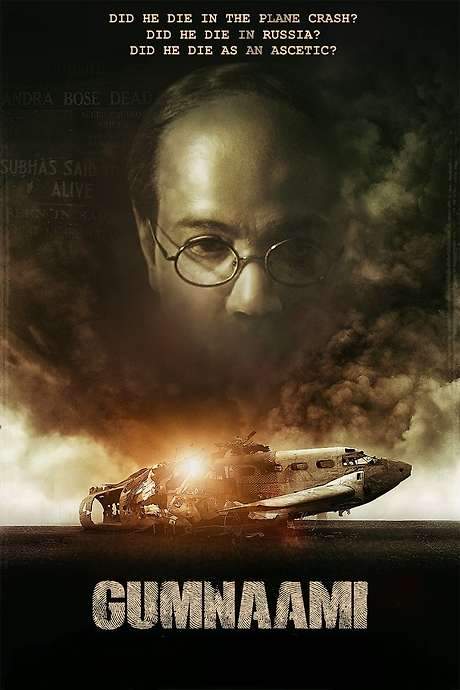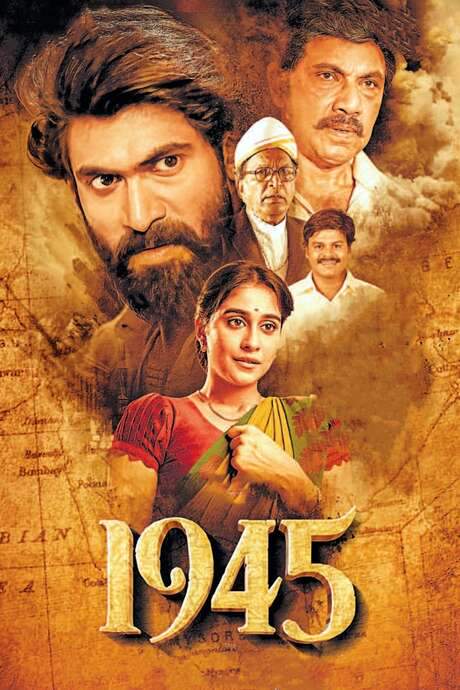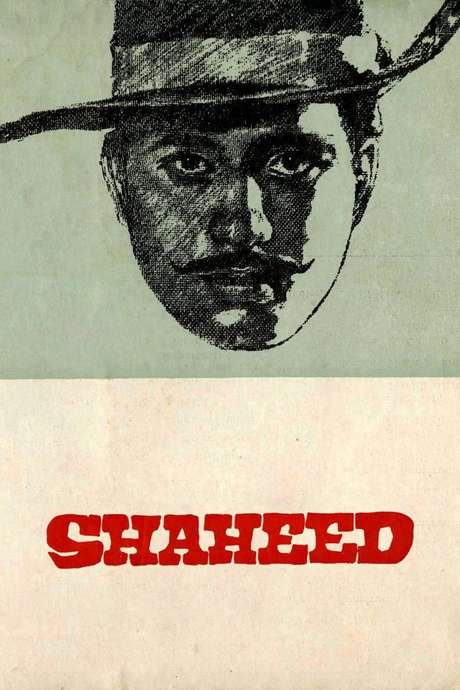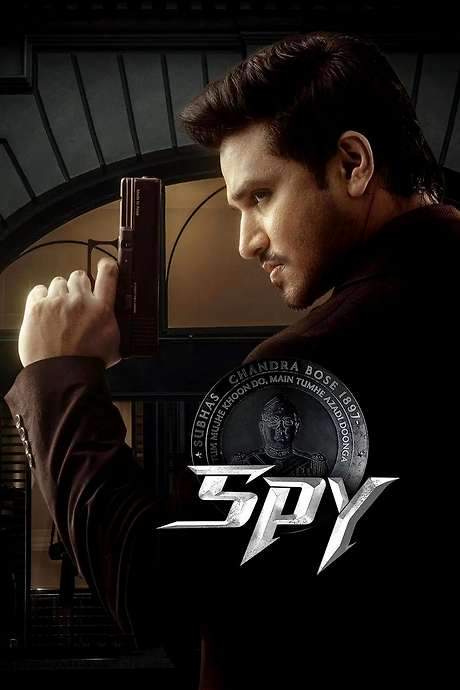
Netaji Subhas Chandra Bose: The Forgotten Hero
Year: 2005
Runtime: 222 mins
Language: Hindi
Director: Shyam Benegal
Directed by Shyam Benegal, this 2005 biographical drama stars Sachin Khedekar, Kulbhushan Kharbanda, Rajit Kapur, Arif Zakaria and Divya Dutta. It chronicles the final five years of Indian nationalist Netaji Subhas Chandra Bose, from his resignation as INC president, his trek across Afghanistan into Europe, his liaison with a German secretary, meetings with Adolf Hitler, and his drive to recruit Indian POWs of the Punjab Regiment to fight the British, punctuated by stirring patriotic speeches.
Warning: spoilers below!
Haven’t seen Netaji Subhas Chandra Bose: The Forgotten Hero yet? This summary contains major spoilers. Bookmark the page, watch the movie, and come back for the full breakdown. If you're ready, scroll on and relive the story!
Netaji Subhas Chandra Bose: The Forgotten Hero (2005) – Full Plot Summary & Ending Explained
Read the complete plot breakdown of Netaji Subhas Chandra Bose: The Forgotten Hero (2005), including all key story events, major twists, and the ending explained in detail. Discover what really happened—and what it all means.
Set in British India amid a tense political backdrop, Subhas Chandra Bose [Sachin Khedekar] navigates a clash with Mahatma Gandhi that tightens around him as arrest and release set the stage for a daring escape. He retreats from public life, tucks away from British guards, and lets a beard grow as part of a calculated ruse. On the night of his escape, he dresses as a Pathan to avoid recognition, slipping out of Calcutta on 16 January 1941 in a car with his nephew Sisir Bose. What follows is a carefully orchestrated odyssey that threads through borders, wartime politics, and shifting loyalties, all in service of a singular aim: to champion India’s fight for independence through unconventional alliances.
Across the frontier town of Peshawar, Bose is placed in the care of the Abwehr and is soon met by figures like Akbar Shah and Bhagat Ram Talwar. From there, Bose is steered toward the North-West Frontier Province and into Afghanistan with the support of Forward Bloc leaders such as Mian Akbar Shah. A brilliant ruse emerges: Bose must appear deaf and dumb and let a beard do the talking, a disguise intended to blend with Pashtun tribesmen. Bhagat Ram Talwar accompanies him as guide, though Bose remains unaware that Talwar harbors his own secret as a Soviet agent, a twist that underscores the film’s layered web of loyalties.
Support from supporters of the Aga Khan III helps Bose cross into Afghanistan, where an Abwehr unit masquerades as a Todt road-construction crew and aids his passage toward the Soviet border. Bose assumes the Pashtun disguise of a insurance agent named “Ziaudddin,” then transitions to a far different identity as he travels to Moscow on the Italian passport of Count Orlando Mazzotta. From Moscow, he makes his way to Rome and eventually Germany, moving through a sequence of states as fate and strategy reshape his path. In Moscow, Bose’s hopes for Soviet support dim as the NKVD delivers him to Berlin via a high-profile courier flight at the dawn of April, ushering him into a corridor of diplomacy and propaganda.
In Germany, Bose is attached to the Special Bureau for India under Adam von Trott zu Solz, a unit charged with broadcasting the German-sponsored Azad Hind Radio. He launches the Free India Center in Berlin and helps assemble the Indian Legion—roughly 4,500 Indian prisoners of war who had fought for the British in North Africa and were re-purposed under Axis auspices. The legion is initially attached to the Wehrmacht and later shifts to the Waffen-SS, with members pledging an oath that ties their allegiance to both Hitler and Bose. Those moments of loyalty are crystalized in a stark vow that echoes across the narrative:
I swear by God this holy oath that I will obey the leader of the German race and state, Adolf Hitler, as the commander of the German armed forces in the fight for India, whose leader is Subhas Chandra Bose.
The oath line is a turning point, revealing Bose’s controversial strategy and the personal toll of pursuing independence through improbable alliances. Bose presides over a controversial experiment: the Indian Legion’s existence becomes a battlefield of political ambition, military calculation, and the uneasy question of whether Axis support could translate into genuine freedom for Indians.
As the war landscape shifts, the legion reaches about 3,000 soldiers who sign on, and Bose’s perspective grows increasingly wary. A cold reality check comes with a meeting with Hitler in May 1942, after which Bose confronts the limitations of German support for India’s cause. The realization that axis ambitions may be more about propaganda than practical aid leads Bose to reassess his options. By February 1943, he withdraws from direct oversight of his legionnaires and secretly departs aboard a submarine bound for Japan, leaving the rank-and-file leadership to drift without him.
Bose remains in Berlin from 1941 to 1943, a period that intertwines his personal life with his political mission. Earlier in 1934 his paths crossed with Emilie Schenkl, whom he would marry in 1937, and their daughter Anita Bose Pfaff later enters this history. In 1943 Bose travels onward to Japan, leaving Germany by submarine through the Cape of Good Hope toward Madagascar, where he transfers to the I-29 for the rest of the journey to Imperial Japan. The INA’s first commitments begin as Japanese forces push toward eastern Indian frontiers in Manipur, and the Bahadur Group’s special operations weave behind enemy lines during the Arakan campaign and the thrust toward Imphal and Kohima, alongside the Burmese National Army led by Ba Maw and Aung San.
Across the Indian mainland, a banner of independence flickers to life with the raising of an Indian Tricolor in Moirang, Manipur—an emblem that signals possibility despite the looming battles around Kohima and Imphal. Operation U-GO and the broader campaign push the British Indian Army to counterattack, inflicting heavy losses on besieging forces. INA troops surrender in varying degrees under Lt Col Loganathan, while others retreat with the Japanese army toward Malaya or Thailand. The broader war ends with Japan’s surrender, the dissolution of the INA, and the repatriation of troops to India as the subcontinent moves toward freedom.
The narrative culminates in a sequence of political and military reckonings: the INA trials at Red Fort, the Royal Indian Navy mutiny, and, ultimately, India’s independence in 1947. Bose’s complex legacy—part freedom fighter, part international strategist—lingers over the film’s final frames, inviting viewers to weigh the costs and ambitions of a revolutionary path that sought to redefine India’s future through extraordinary alliances and extraordinary risks.
Last Updated: October 09, 2025 at 16:30
Unlock the Full Story of Netaji Subhas Chandra Bose: The Forgotten Hero
Don't stop at just watching — explore Netaji Subhas Chandra Bose: The Forgotten Hero in full detail. From the complete plot summary and scene-by-scene timeline to character breakdowns, thematic analysis, and a deep dive into the ending — every page helps you truly understand what Netaji Subhas Chandra Bose: The Forgotten Hero is all about. Plus, discover what's next after the movie.
Netaji Subhas Chandra Bose: The Forgotten Hero Timeline
Track the full timeline of Netaji Subhas Chandra Bose: The Forgotten Hero with every major event arranged chronologically. Perfect for decoding non-linear storytelling, flashbacks, or parallel narratives with a clear scene-by-scene breakdown.

Characters, Settings & Themes in Netaji Subhas Chandra Bose: The Forgotten Hero
Discover the characters, locations, and core themes that shape Netaji Subhas Chandra Bose: The Forgotten Hero. Get insights into symbolic elements, setting significance, and deeper narrative meaning — ideal for thematic analysis and movie breakdowns.

Netaji Subhas Chandra Bose: The Forgotten Hero Spoiler-Free Summary
Get a quick, spoiler-free overview of Netaji Subhas Chandra Bose: The Forgotten Hero that covers the main plot points and key details without revealing any major twists or spoilers. Perfect for those who want to know what to expect before diving in.

More About Netaji Subhas Chandra Bose: The Forgotten Hero
Visit What's After the Movie to explore more about Netaji Subhas Chandra Bose: The Forgotten Hero: box office results, cast and crew info, production details, post-credit scenes, and external links — all in one place for movie fans and researchers.

Similar Movies to Netaji Subhas Chandra Bose: The Forgotten Hero
Discover movies like Netaji Subhas Chandra Bose: The Forgotten Hero that share similar genres, themes, and storytelling elements. Whether you’re drawn to the atmosphere, character arcs, or plot structure, these curated recommendations will help you explore more films you’ll love.
Explore More About Movie Netaji Subhas Chandra Bose: The Forgotten Hero
Netaji Subhas Chandra Bose: The Forgotten Hero (2005) Scene-by-Scene Movie Timeline
Netaji Subhas Chandra Bose: The Forgotten Hero (2005) Movie Characters, Themes & Settings
Netaji Subhas Chandra Bose: The Forgotten Hero (2005) Spoiler-Free Summary & Key Flow
Movies Like Netaji Subhas Chandra Bose: The Forgotten Hero – Similar Titles You’ll Enjoy
Gandhi (1983) Story Summary & Characters
A Forgotten Man (2024) Spoiler-Packed Plot Recap
Bose: Dead/Alive (1000) Movie Recap & Themes
The Legend of Bhagat Singh (2002) Story Summary & Characters
Subedar Joginder Singh (2018) Ending Explained & Film Insights
Gumnaami (2019) Story Summary & Characters
The Hero: Love Story of a Spy (2003) Movie Recap & Themes
Subash Chandra Bose (2005) Ending Explained & Film Insights
Deewaar: Let’s Bring Our Heroes Home (2004) Story Summary & Characters
The Forgotten Army (1000) Story Summary & Characters
1945 (2022) Plot Summary & Ending Explained
Shershaah (2021) Movie Recap & Themes
Shaheed (1965) Full Summary & Key Details
Heroes (2008) Spoiler-Packed Plot Recap
Spy (2023) Complete Plot Breakdown















